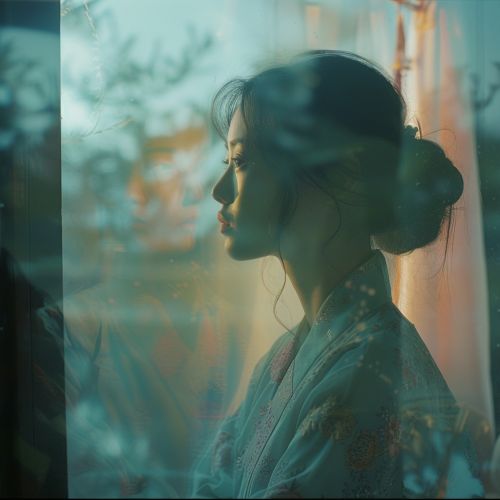Flashback (narrative)
Definition and Overview
A flashback is a narrative device that functions as an interruption of the chronological sequence of events to relay a past occurrence. The term is borrowed from the cinematic technique of the same name, and is used in literature, film, television, and other forms of media. Flashbacks are often used to provide background information, or to reveal a character's memories, thoughts, or feelings.
Flashbacks are a form of nonlinear narrative, a structure that disrupts the linear flow of the narrative by scattering events in non-chronological order. This technique is often used to mimic memory and consciousness, reflecting the way the human mind recalls past events not in order but in a random, associative manner.
History and Development
The use of flashbacks as a narrative device has a long history, dating back to ancient literature. The Epic of Gilgamesh, one of the earliest known works of literature, uses flashbacks to recount earlier events. In more recent times, flashbacks have been used extensively in literature, film, and television to provide depth and complexity to the narrative.
In the 19th century, authors such as Charles Dickens and Emily Bronte employed flashbacks in their novels to enhance the emotional depth and complexity of their characters. In the 20th century, the use of flashbacks became even more prevalent with the advent of modernist literature and cinema. Authors like Virginia Woolf and James Joyce used flashbacks to explore the inner workings of the human mind, while filmmakers like Orson Welles and Alfred Hitchcock used them to create suspense and dramatic tension.
Types of Flashbacks
There are several types of flashbacks, each serving a different purpose within the narrative. These include:
Experiential Flashbacks
Experiential flashbacks are used to convey a character's past experiences that are directly relevant to the current action of the story. These flashbacks are often used to provide context or explanation for a character's current behavior or emotional state.
Informational Flashbacks
Informational flashbacks are used to provide critical information that is not revealed in the normal course of the narrative. This type of flashback is often used to create suspense or to reveal a key piece of information that changes the audience's understanding of the narrative.
Emotional Flashbacks
Emotional flashbacks are used to evoke a character's emotional state at a previous time. These flashbacks are often used to deepen the audience's understanding of a character's emotional journey or development.
Use in Different Media
Flashbacks are used in a variety of media, each with its own unique approach to the device.
Literature
In literature, flashbacks are often used to provide depth to characters and to reveal their motivations. They can also be used to provide information that is crucial to the plot. Flashbacks in literature are often signaled by changes in tense or by explicit cues in the text.
Film and Television
In film and television, flashbacks are often used to provide backstory or to reveal information that is hidden from the characters. They are often visually distinct from the main narrative, using different lighting, color, or film techniques to signal the shift in time.
Theatre
In theatre, flashbacks can be used to break up the linear narrative and provide insight into a character's past. They are often signaled by changes in lighting, sound, or staging.
Criticisms and Limitations
While flashbacks can be a powerful narrative device, they are not without their criticisms and limitations. Some critics argue that flashbacks can disrupt the flow of the narrative and confuse the audience. Others argue that they can be a lazy way of providing information, allowing the author to tell rather than show. Additionally, flashbacks can be difficult to execute well, requiring skill and finesse to integrate smoothly into the narrative.
See Also


